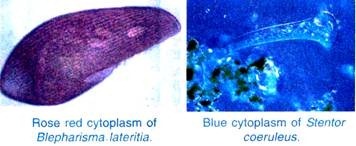In this article we will discuss about the stages involved in the life cycle of adult hookworm (explained with diagram).
The adult hookworms reside in the small intestine, where they draw a bit of the mucous membrane into their buccal capsules and nourish themselves on blood and tissue juices which they suck. No intermediate host is required and like other helminths, multiplication of worm does not take place inside the human body. Man is the only primary host for A. duodenale.
The following are the various stages:
Stage 1. Copulation and fertilization:
Hookworms mate in the host’s (man) intestine. During copulation the bursa of the male is applied around the female at the level of its vulva. The spicules are inserted into the vulva. The secretion of cement gland (homologous to prostate gland) assures uninterrupted discharge of sperms. The sperms are collected in the seminal receptacle after transfer into the female and fertilization occurs in the seminal receptacle.
Stage 2. Passage of eggs from the infected host:
The fertilized eggs, containing segmented ova with 4 blastomeres, are passed out in the stool of the human host. A single female may produce about 25,000-30,000 eggs each day which are passed out with the stool of the host. Eggs are oval or elliptical in shape, protected by hyaline chitinous shells. The fertilized egg within has already cleaved into a four or eight celled embryo. The eggs, when passed out with the faeces, are not infective to man.
Eggs:
The eggs are oval or elliptical in shape having a thin hyaline shell. The egg measures 60 x 40 μm. The egg is colourless and contains a segmented ovum usually with 4 bastomeres. There is a clear space between the egg-shell and the segmented ovum.
Stage 3. Development in soil:
The egg completes cleavage in a few hours and becomes a morula. The morula has one end rounded and the other end tapering. Under favourable environmental conditions of moisture, oxygen supply and temperature (68-85°F), embryo develops into a motile first stage juvenile or Rhabditiform larva which hatches out within 1-2 days and the larva which comes out is 0.25-0.3 mm long and 17 μm in diameter.
Development is slow in undiluted faeces but when the eggs are mixed with stool, the eggs may be killed or destroyed. Best development takes place in moist, shady, warm areas with sandy loam soil. Newly hatched larva starts feeding on bacteria and organic debris.
This free living first stage Rhabditiform larva has a mouth, a buccal capsule, a flask shaped muscular oesophagus and an intestine. It also possesses a nerve ring at the beginning of the bulb-like end of oesophagus and rudiments of genital organ.
After about 3-4 days of feeding and growth, this larva sheds its cuticula and moults twice and becomes the second stage Rhabditoid larva. It grows to 0.5-0.6 mm in length and undergoes the following changes—the mouth closes and the larva stops feeding.
After that the larva transforms into a third-stage juvenile or filariform larva. This juvenile is about 500-600 μm in length, the infective stage of the parasite. The time taken for development from eggs to filariform larvae, is on an average 8-10 days (Fig. 12.4).
Stage 4. Infection of a new host:
The filariform larva is the infective stage of A. duodenale for humans. The larva casts off its sheath and gains entrance to the body by penetrating the skin. Generally it penetrates the soft skin on the sides of feet and hands, through hair follicles. Its penetration is generally accompanied by a severe dermatitis called “ground itch”, characterised by ulceration of skin about wounds. Infection of filariform larva is also possible through ingestion of contaminated food and water.
Stage 5. Larval migration:
On reaching the subcutaneous tissues the larvae enter into the lymphatics or small venules. In blood stream they are carried first to the right ventricle of heart through the right auricle and then to the lungs by way of pulmonary arteries, where they break through the capillary walls and pass into the alveolar spaces.
From lungs larvae ascend trachea and larynx, crawl over the epiglottis to the back of the pharynx and are swallowed through oesophagus and ultimately reach the intestine. At the time of migration or on reaching the oesophagus, a third moulting happens and a terminal buccal capsule is formed. The period taken for such migration is about 10 days.
Stage 6. Localisation and laying of eggs:
When the growing larvae reside in the small intestine, become attached to the mucous lining and feed on blood of host. They develop into adolescent worms. In 3-4 week’s-time they are sexually matured and undergo a fourth moulting.
Within the host’s intestine male and female worms copulate and the female worm starts laying eggs in the faeces. The cycle is thus repeated. The interval between the time of infection and the first appearance of eggs in the faeces is about 40-45 days.
